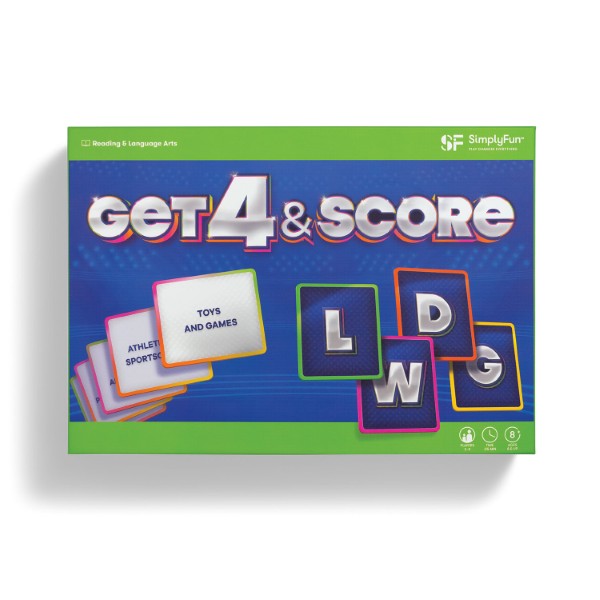
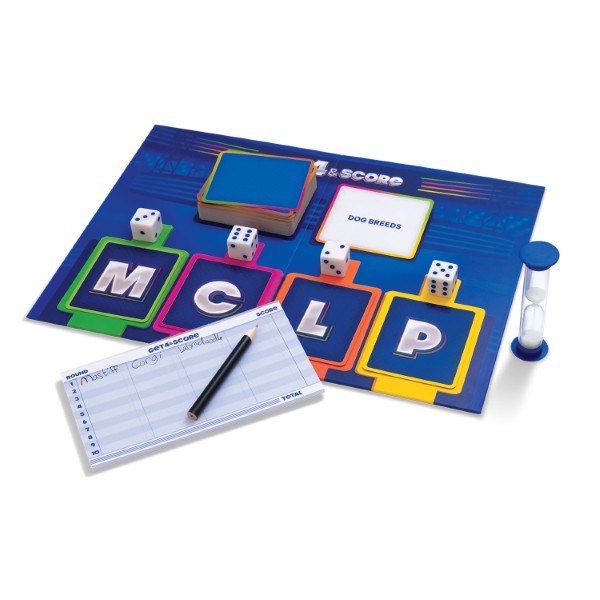
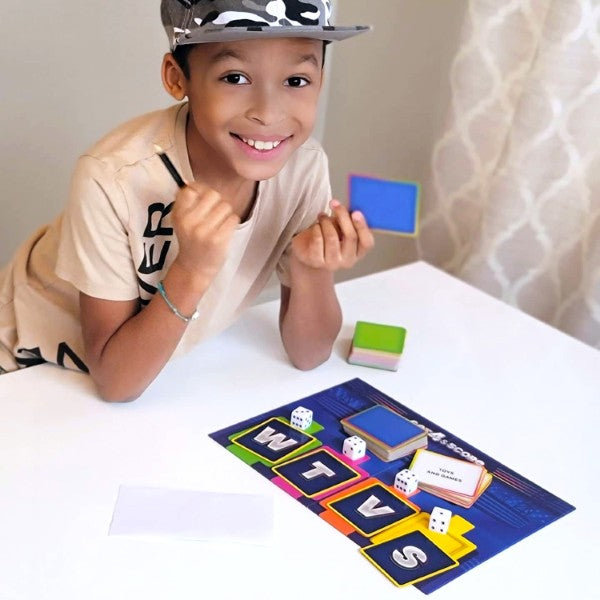
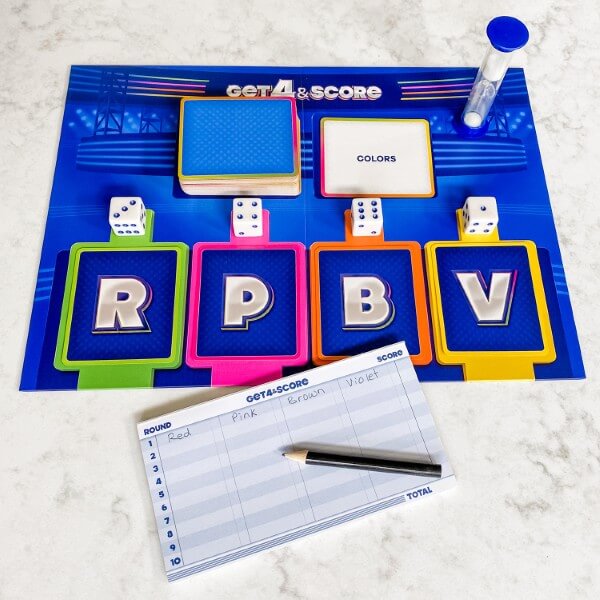
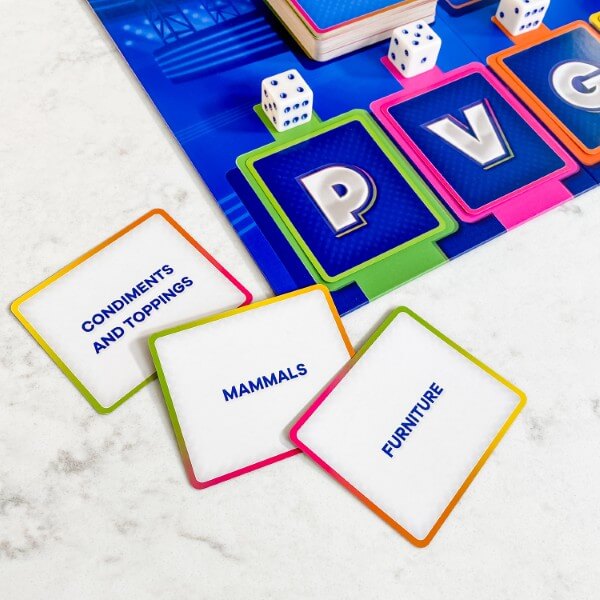


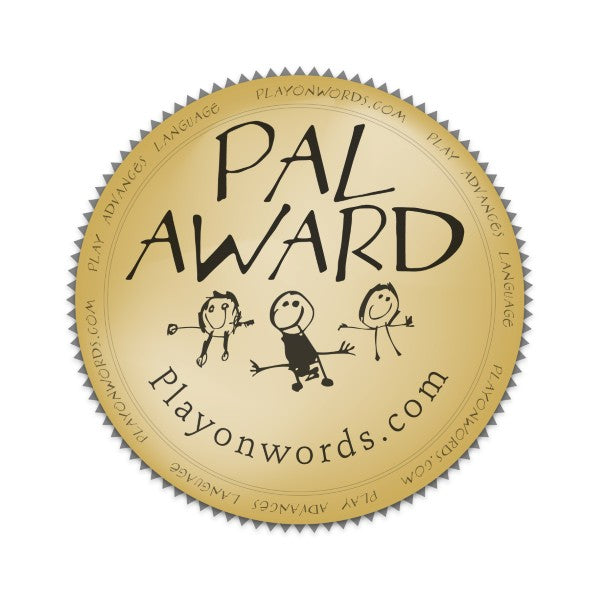
Collapsible content
You can play Get 4 & Score with 2-8 players, ages 8 and up.
Get 4 & Score is good for developing vocabulary and quick thinking.
Unfold the gameboard and place it in the middle of the play area within reach of all players.
Pass each player one sheet from the answer pad and one pencil.
Shuffle the 60 category cards and place them on the gameboard facedown, on the category card draw space.
Separate the 84 letter cards into 4 decks, differentiated by the color on the back of the cards. Shuffle each letter card deck and place them beside the gameboard near the corresponding color.
Set the 4 dice within reach of all the players.
Players quickly write down words that begin with the specific letters revealed by the cards AND fit into the category shown on the category card. After ten rounds, the player with the most points wins.
There is no taking turns; everyone plays each round, writing down their answers as quickly as possible.
Players start each of the ten total rounds by carrying out the following tasks in order:
1. Roll all four dice and randomly place one on each of the die spaces on the board.
2. Draw the top card from each of the letter card decks and place them face-up on the gameboard in the matching colored spaces.
3. Flip over the category card from the deck, placing it face-up on the open category card space.
4. Flip over the sand timer to begin the round.
During a round, each player to writes down up to four answers on their answer sheet that correspond to the category card shown and starts with each of the four letters shown on the letter cards. There may not always be an answer for every letter/category combination, so players should prioritize their answers to finish within the time limit.
For each letter card, a player must write ONLY ONE answer on their answer sheet. The value of each answer is determined by the die next to the letter card on the gameboard.
If two (or more) of the letter cards show the same letter (ie: two cards show ‘A’), only one answer must be provided for the matching letter, and the value of the answer is determined by the sum of the two (or more) dice next to the matching letter cards.
To ensure the maximum variety of letter cards appears during game play, players may choose to reshuffle all four letter card decks after every round. However, the category card deck must never be reshuffled during the game.
The sand timer indicates the maximum time (60 seconds) allowed for players to write down their answers on the answer sheet. After the time has elapsed, the round ends. All players must put down their pencils and scoring begins.
After each round, players share their answers with each other one-by-one. All players must agree which answers are valid words for the current Category Card shown. Disqualify any words that fail. After determining the valid answers, players add the scores in the right-hand column of the answer sheet.
For younger players, you can eliminate the sand timer to give them more time to think of their words.
For advanced play, the basic game remains the same, with the following challenge:
When each player has finished writing their answers, they must place their Answer Sheet face-down in a pile in the middle of the table. When time runs out, the answers are counted in the order the sheets were placed. (ie: the Answer Sheet on the bottom is counted first and the top sheet is counted last). If any players repeat the same answer, only the player who turned their sheet over first will score the points.
After ten rounds, each player adds their scores from each of the ten rounds to calculate their total score for the game. The player with the highest total wins the game!
Challenge your knowledge, memory and reflexes. To win the game, you not only have to think hard, you have to think fast with Get 4 & Score!

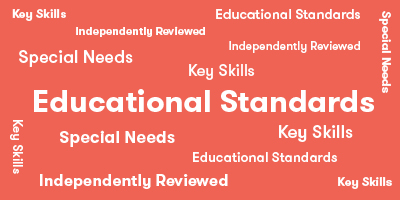
Core Standard*: None

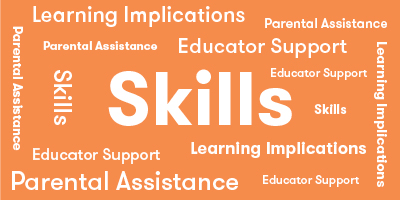
Explore
What Does Child Do To Use Skill In The Game?
In Get 4 & Score, players quickly examine the Letter Cards and Dice prior to writing their answers.
How Parents Can Assist Learning
No special parent support required.
Learning Implications and Educator Support
No special educator support required.
Determine
What Does Child Do To Use Skill In The Game?
Players determine if the words start with the correct letter and fit within category on the Category Card.
How Parents Can Assist Learning
Ask follow up questions to encourage a deeper discussion and exploration of why children selected their answers and how those choices fit the category.
Learning Implications and Educator Support
Ask follow up questions to encourage a deeper discussion and exploration of why children selected their answers and how those choices fit the category. This is a good way to develop empathy, attention and active listening skills.
Compare
What Does Child Do To Use Skill In The Game?
Player compare their answers to the Letter Cards and Category Card.
How Parents Can Assist Learning
Players need to decide what fits within a category. For example, if the category is "pets", does that include alligator, ape, caterpillar or elephant? Additionally, they can discuss and agree upon a decision making strategy, such as all players other than the person who wrote the idea (ex: alligator) can vote on whether the idea fits in the category.
Learning Implications and Educator Support
Get 4 & Score involves comparing words and ideas. Educators can expand the learning by discussing what children meant by the words they chose. Also, players need to decide what fits within a category. For example, if the category is "pets", does that include alligator, ape, caterpillar or elephant?Additionally, they can discuss and agree upon a decision making strategy. For example, all players other than the person who wrote the idea (ex: alligator) can vote on whether the idea fits in the category.Letting children determine the boundaries of a category and determine the decision making strategy helps them think about fairness and equality.
Remember
What Does Child Do To Use Skill In The Game?
This game is primarily about remembering items, people, places and other information related to specific categories.
How Parents Can Assist Learning
No special parent support required. Because the categories are open-ended and familiar, Get 4 & Score is very good for children and adults to play together. If there are any category cards that the children do not know well, it will give the adults an opportunity to explain the category and discuss their answers.
Learning Implications and Educator Support
No special educator support required. However, educators may want to use Get 4 & Score to help children reinforce content they are learning in class. If so, educators can select the Category Cards they want to children to play with.
Plan
What Does Child Do To Use Skill In The Game?
If a players do not have enough time to write word for all the Letters, they may prioritize the letters with the highest point value.
How Parents Can Assist Learning
Because the goal of the game is to score the most points, children may want to write words for letters that have highest point value first. But, they may run out of time if they cannot think of a word for a specific letter. Parents can help children consider other approaches. For example, quickly look at each letter and try to write a word that relates to the category. Then, go back to the highest point value Letter Cards for which they have not yet written a word.
Learning Implications and Educator Support
Because the goal of the game is to score the most points, children may want to write words for letters that have highest point value first. But, they may run out of time if they cannot think of a word for a specific letter.Educators can help children consider other approaches. For example, quickly look at each letter and try to write a word that relates to the category. Then, go back to the highest point value Letter Cards for which they have not yet written a word.
Solve
What Does Child Do To Use Skill In The Game?
Players solve the game by accurately writing ideas that match the Letter Cards and fit within the Category Card.
How Parents Can Assist Learning
No special parent support required. However, you may need to remove cards that may not be relevant to children.
Learning Implications and Educator Support
No special educator support required. However, you may need to remove cards that may not be relevant to children.
Review
What Does Child Do To Use Skill In The Game?
Players review their answers by reading them aloud and discussing whether the answers fit the Category Card.
How Parents Can Assist Learning
Get 4 & Score can spark lots of great conversations, such as why someone listed an unusual favorite (ex: an animal no one has heard of) or why most or all players named the same item (ex: everyone naming "Ice Cream" as a dessert starting with "I"). These conversations can help build social emotional skills, and strengthen empathy and positive emotions among players.
Learning Implications and Educator Support
Get 4 & Score can spark lots of great conversations, such as why someone listed an unusual favorite (ex: an animal no one has heard of) or why most or all players named the same item (ex: everyone naming "Ice Cream" as a dessert starting with "I"). These conversations can help build social emotional skills, and strengthen empathy and positive emotions among players.
Demonstrate
What Does Child Do To Use Skill In The Game?
Players demonstrate their answers by reading them aloud for others to comment upon.
How Parents Can Assist Learning
Get 4 & Score can spark lots of great conversations, such as why someone listed an unusual favorite (ex: an animal no one has heard of) or why most or all players named the same item (ex: everyone naming "Ice Cream" as a dessert starting with "I"). These conversations can help build social emotional skills, and strengthen empathy and positive emotions among players.
Learning Implications and Educator Support
Get 4 & Score can spark lots of great conversations, such as why someone listed an unusual favorite (ex: an animal no one has heard of) or why most or all players named the same item (ex: everyone naming "Ice Cream" as a dessert starting with "I"). These conversations can help build social emotional skills, and strengthen empathy and positive emotions among players.
*Data compiled from CCSSI ELA Standards, WA Science Standards, and Washington Social Studies Standards

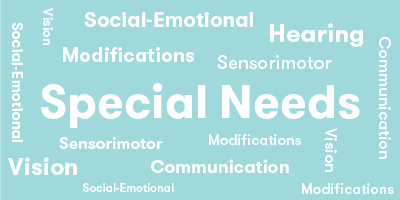
Cognitive
Suggestions for How to Modify Play Experience
This game many be difficult for children with cognitive challenges. Play with a partner. This may assist the child, as two people will be generating ideas. Remove cards that have categories that will be too difficult.
The timed aspect of the game puts the child who requires more time to process information at a disadvantage. To even the playing field, say stop after the timer runs down, then turn the timer again to allow more time for the child who needs more time to think. Children who have difficulty with spelling only need to write enough letters to remind them of what word they have generated. Spelling does not count in the score.
Children with cognitive challenges may need to play with just two cards instead of four. This will give them a greater opportunity for success. If this becomes easy, add a third card.
Communication
Suggestions for How to Modify Play Experience
Children only need to read their responses. So limited language is not an issue. If a child is none verbal, but can write, another player can read the response.
If speed of word retrieval is a problem, playing with a partner is recommended.
Sensorimotor
Suggestions for How to Modify Play Experience
Children with limited motor control may use a voice device to dictate responses. Write the letters on a piece of paper for the child and let the child move a little distance away, so others don't hear them as they dictate. Then turn the timer over.
Children who have difficulty writing may use a computer or tablet to type sufficient letters to indicate their response.
Children with fine motor difficulties can allow other players to turn the cards and place the dice.
Social Emotional/Behavioral
Suggestions for How to Modify Play Experience
Children with low frustration tolerance may get upset when they can't think of a response. Give them some strategies to use before starting the game. For example, tell them to try adding different vowels after a consonant (or consonants after a vowel) to see if that triggers an idea.
Players with low frustration tolerance may benefit from playing with a partner. The partner can help generate ideas as well as model calm responses when words are not found for all letters.
Vision
Suggestions for How to Modify Play Experience
Children with low vision should be allowed to type words on a tablet or computer so they can use a large font.
If the child uses Braille, state the letters turned over and let the child type them on their writer. Then turn the timer over. Children only need to type enough letters to remind them of the word when the responses are read.
Impulsive children may begin to write any words that start with the designated letters. Remind players of the category several times during a round.
Hearing
Suggestions for How to Modify Play Experience
Sign language is great, if at least one other player can interpret the signs.
Hearing is not needed to see the letters and write responses, but players need to be able to hear or see other players responses. Small white boards could be used for writing responses instead of the answer pads. These would allow players to write larger and then hold them up for others to see.
*Data compiled from CCSSI ELA Standards, WA Science Standards, and Washington Social Studies Standards

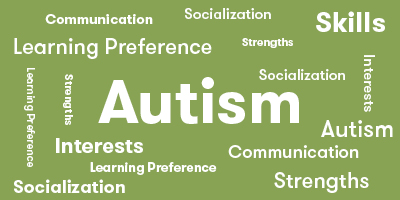
Autism Strengths & Interests
Short Summary of Strengths & Interests
- Has a good memory for first letter sounds.
- Knows many categories and their members of each category such as the names of birds or dogs.
- Easily writes words.
Is good at matching visual items
Is This Game Appropriate? Yes
Description
Get 4 and Score involves letter to sound matching as children think of words that start with a specified letter. Children with autism who are good at this type of memory and matching will put that skill to good work in Get 4 and Score.
Has a good memory for sensory details, including visual, touch, taste and smell
This game is not appropriate
Has a good memory for words, phrases and dialouge
Is This Game Appropriate? Yes
Description
Some children with autism have a good memory for words and enjoy building their vocabulary. Get 4 and Score will allow these children to show off and hone those skills as they think of words (ex: Hawk) that start with specific letters (ex: "H") in a category (ex: Birds).
Has a good memory for pictures, numbers and patterns
This game is not appropriate
Likes to put things in order or a sequence
This game is not appropriate
Learns through visualizing or "replaying" actions in their mind
Is This Game Appropriate? Yes
Description
When trying to think of a winning word in a category, children need to visualize many items, objects or other things that fit in the category. For example, if the category is Birds, the child will need to generate a mental list of birds such as hawk, canary, goose, duck. From this list, the child can then select the word that starts with one of the letters on the Letter Card, such as canary for "C". Children with autism who are good at visualizing may enjoy using that strength in Get 4 and Score
Likes activities with rules, such as math and phonics
Is This Game Appropriate? Yes
Description
Some children with autism enjoy phonics. Since Get 4 and Score is based on thinking of words that start with a letter, children may use their understanding of phonics to think of a winning word.
Is very concrete and literal
This game is not appropriate
Is good at nonverbal reasoning and logic
This game is not appropriate
Likes spatial problem solving
This game is not appropriate
Can read well with good vocabulary, though may not fully comprehend content
Is This Game Appropriate? Yes
Description
Some children with autism enjoy and have good vocabularies. Get 4 and Score is a great game for these children to use this knowledge and ability. Please note that this game does not require reading.
Likes to use and has good fine motor skill
Is This Game Appropriate? Yes
Description
While Get 4 and Score is not a fine motor activity game, it does require writing words. If the child with autism can or enjoys writing, then she can use that skill playing the game. If needed, you can remove the timer to give children more time to write.
Likes established routines or set ways of doing things
This game is not appropriate
Likes to use and has good musical abilities
This game is not appropriate
Likes to use and has good drawing skills
This game is not appropriate
Autism Special Considerations
Appears to ignore other's communication and/or has difficulty giving eye contact to a communication partner
Is This Game Appropriate for Child with Characteristic? Yes
Can Child with Characteristic Play Game w/o Modification? Yes
Strategies for Developing Compensatory Skills:
No eye contact is needed in Get 4 & Score. Players need to pay attention to each other's responses to determine if they fit the category. Bring the child's attention to players who are reading their answers. If a response is questionable, ask the child. For example, "Robin, is boxer a kind of cat?" This will help the child focus on the other player's response.
Has difficulty understanding complex verbal directions
Is This Game Appropriate for Child with Characteristic? Yes
Can Child with Characteristic Play Game w/o Modification? No
Strategies for Developing Compensatory Skills:
The direction for using the cards and the dice are not difficult to follow. However, the child needs to understand the concept a category, which is somewhat abstract. If this is difficult, start with simple categories, such as colors, cats, dogs, and other familiar categories.
When you add a category, review examples with the child. For example, when you add the countries category, look at a map or globe and talk about the different countries. When the game is played and answers are read for this category, the map can be checked for confirmation. This reinforces the child's learning. Similar reviews can be done with each new category added by searching online for examples of different category members.
Uses vocabulary inaccurately or demonstrates echolalia (repeating another's speech)
Is This Game Appropriate for Child with Characteristic? Yes
Can Child with Characteristic Play Game w/o Modification? No
Strategies for Developing Compensatory Skills:
Children with echolalia often have difficulty generating their own words independently. Unless the child has a fixation on the alphabet and spelling this game is probably inapropriate.
Gets stuck repeating a verbal topic or physical actions and/or has difficulty attending to others' actions or topic.
Is This Game Appropriate for Child with Characteristic? Yes
Can Child with Characteristic Play Game w/o Modification? No
Strategies for Developing Compensatory Skills:
Children don't need to be aware of what other players are thinking. The concern for children with this issue is whether they can shift their thinking from one category to another with each round. To help children shift, start each round by generating examples of the category that do not involve the letters on the board.
Has difficulty producing speech/communication
Is This Game Appropriate for Child with Characteristic? Yes
Can Child with Characteristic Play Game w/o Modification? No
Strategies for Developing Compensatory Skills:
Verbal production is not needed if others can read what the child wrote. The larger issue is whether the child has the vocabulary and conceptual understanding to generate the written words. The game can be used to develop vocabulary by using carefully seleced categories that are familiar to the child and working with a partner. When you add a category, review examples with the child. For example, when you add the countries category, look at a map or globe and talk about the different countries. When the game is played and answers are read for this category, the map can be checked for confirmation. This reinforces the child's learning. Similar reviews can be done with each new category added by searching online for examples of different category members. Children with autism are typically visual learners, so support examples with pictures, if possible.
Has difficulty sequencing multi-step actions and/or doing complex abstract tasks
Is This Game Appropriate for Child with Characteristic? No
Can Child with Characteristic Play Game w/o Modification? No
Strategies for Developing Compensatory Skills:
Determining examples of a category requires ability to think about how various things are alike in some significant ways. This requires abstract thinking. Unless children can generate items in several categories, Get 4 & Score will be too challenging.
Demonstrates difficulty initiating and maintaining social interactions
Is This Game Appropriate for Child with Characteristic? Yes
Can Child with Characteristic Play Game w/o Modification? Yes
Strategies for Developing Compensatory Skills:
Social interaction is not a major part of this game. Children write their answers at the same time then share their answers in turn. Children can be supported to be more social during this sharing. For example, "Listen to what Sara says and see if she is right."
Acts out or demonstrates avoidance behaviors when frustrated, overwhelmed, or needs more sensory input.
Is This Game Appropriate for Child with Characteristic? No
Can Child with Characteristic Play Game w/o Modification? No
Strategies for Developing Compensatory Skills:
Unless the child has a particular interest in the alphabet and words, this game may be too challenging and thus inappropriate for the child with behavior issues.
Has short attention span for non-preferred activities
Is This Game Appropriate for Child with Characteristic? No
Can Child with Characteristic Play Game w/o Modification? No
Strategies for Developing Compensatory Skills:
Unless the child has a particular interest in the alphabet and words, this game may be too challenging and thus inappropriate for the child with behavior issues.
Needs sameness or consistent routines and/or has difficulty with transitions from one activity to another
Is This Game Appropriate for Child with Characteristic? Yes
Can Child with Characteristic Play Game w/o Modification? Yes
Strategies for Developing Compensatory Skills:
The play of the game follows the same pattern with each round. The concern for children with this issue is whether they can shift their thinking from one category to another with each round. To help children shift, start each round by generating examples of the category that do not involve the letters on the board.
Play games at the same time every day, so the child anticipates the game routine.
Has difficulty understanding others' feelings, intentions, and the reasons for others' actions.
Is This Game Appropriate for Child with Characteristic? Yes
Can Child with Characteristic Play Game w/o Modification? Yes
Strategies for Developing Compensatory Skills:
Players do not need to understand what others are thinking in this game.
*Data compiled from CCSSI ELA Standards, WA Science Standards, and Washington Social Studies Standards

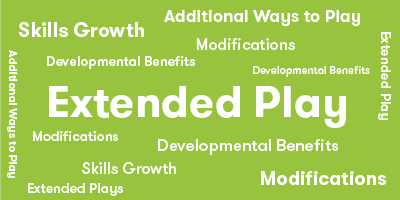
Extra Ways to Play the Game
Have contest to generate new categories for the game. The one who comes up with the most new categories is the winner. Try playing the game using these new categories.
Materials Needed
No additional materials needed.
Developmental Benefits
Generating new categories involves remembering current categories in the game, ability to understand that categories must have many potential items, and then the imagination to create a new potential game category, such as "Princesses or Fairies."
Extra Ways to Play the Game
It may be easier (and faster) for children to write on larger spaces. Use scratch paper or other larger materials to write responses. Small white boards are great because enable children to erase responses and reuse the board for each round.
Materials Needed
Small white boards, markers, pencils, pens, paper, etc.
Developmental Benefits
Adult's can see children's spelling and help them sound out or think about the spelling rules for specific rules.
Extra Ways to Play the Game
Play in rotation with each player taking the next letter on the board. Turn the timer over. If a word is generated, the player gets to roll one die to see how many points are earned.
Materials Needed
No additional materials needed.
Developmental Benefits
This modification simplifies the game somewhat, so that only one word needs to be determined at a time. The child has one minute to come up with one word, so the pressure of the timer and generating four words is removed.
*Data compiled from CCSSI ELA Standards, WA Science Standards, and Washington Social Studies Standards
Game Details
- 1 Game Board
- 80 Letter Cards
- 60 Category Cards
- 4 Six-Sided Dice
- 1 60-Second Sand Timer
- 1 Answer Pad
- 4 Pencils
- 1 Rules Booklet
- Choosing a selection results in a full page refresh.
- Opens in a new window.











